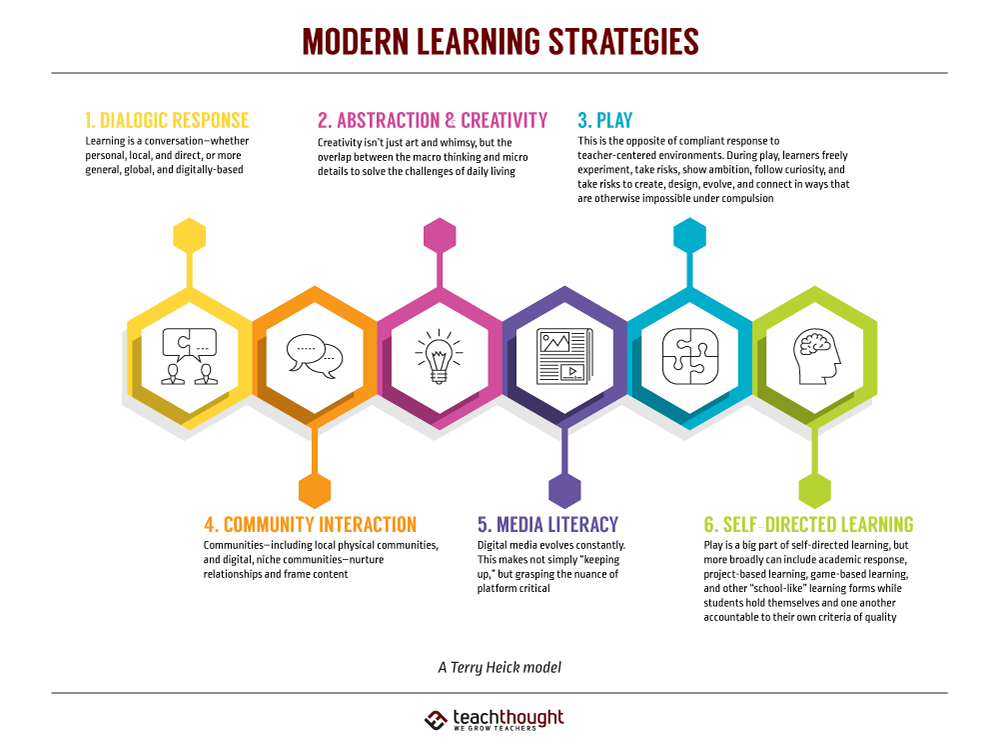6 Channels Of 21st Century Learning
by Terry Heick
This post has been updated and republished from a 2013 post by Terry Heick
Teachers often wrestle with two big questions: How do people learn, and how can they do it better in a constantly evolving context?
In pursuit, the theme of ’21st-century learning’ often surfaces, a popular label that, while perhaps cliche, still seems to be necessary as we iterate learning models, fold in digital media resources, then add learning algorithms, privacy concerns, and data analytics to an already chaotic event (i.e., learning).
This has produced our 9 Characteristics of 21st Century Learning, a kind of overview we created in 2009, and our Inside-Out School model that is meant to be a kind of bridge between current school design and what’s possible moving forward.
Learning Channels
Above is a kind of ‘2.0’ of the ‘9 Characteristics of 21st Century Learning’ that is framed around the idea of ‘learning channels.’
‘Learning channels’ refer to the unique pathways students most naturally–and powerfully–use to develop skills and understanding. These can be technology-based, but they don’t necessarily have to be. And while the idea of a channel connotes content (e.g., a television or YouTube channel, for example), this is less about content and more about how people learn.
In this model, you’ll notice six distinct channels. Obviously, this doesn’t mean that these are the only six channels–or pathways–for learning, but rather these six are emerging or have always existed as powerful players in how learners make meaning: finding, decoding, evaluating, and sharing fluid media and information across a continuum of platforms to solve problems and meet opportunities native to individual learners.
6 Channels Of 21st Century Learning
1. Dialogic Response
Learning is a conversation–whether personal, local, and direct, or more general, global, and digitally-based. What are the effects of dialogic learning? A 2008 study by Stan Frijters, Geert ten Dam, and Gert Rijlaarsdam presented a study on teaching value-loaded critical thinking comprising of 297 students. The data “indicated that the dialogic learning condition, compared to the non-dialogic, resulted in a more positive effect on the critical-thinking competences of the students, both in terms of generative fluency of reasoning and quality of value orientation.”
You can read more here.
2. Community Interaction
Communities–including local physical communities, and digital, niche communities–nurture relationships and frame content.
3. Abstraction & Creativity
Creativity isn’t just art and whimsy, but the overlap between the macro thinking and micro details to solve the challenges of daily living. Abstraction is also part of TeachThought’s ‘6 Domains Of Understanding.’
4. Media Literacy
Digital media evolves constantly in both form and function, from text, images, hyperlinked documents, and interactive video (the ‘form’ part) to communicating, curating, duplicating, citing, attributing, grouping, and sharing (the ‘function’ part). Understanding the nuance of individual platforms–and how they work together to serve human-focused needs and opportunity–is ‘media literacy.’
5. Play
This is the opposite of compliant response to teacher-centered environments. In play, learners freely experiment, show ambition, follow curiosity, and take risks to create, design, evolve, and connect in ways that are otherwise impossible under compulsion. You can read more about how to create learning through play.
6. Self-Directed Learning
Play is a big part of self-directed learning, but more broadly can include academic response, project-based learning, game-based learning, and other ‘school-like’ learning forms while students hold themselves and one another accountable to their own criteria of quality.

